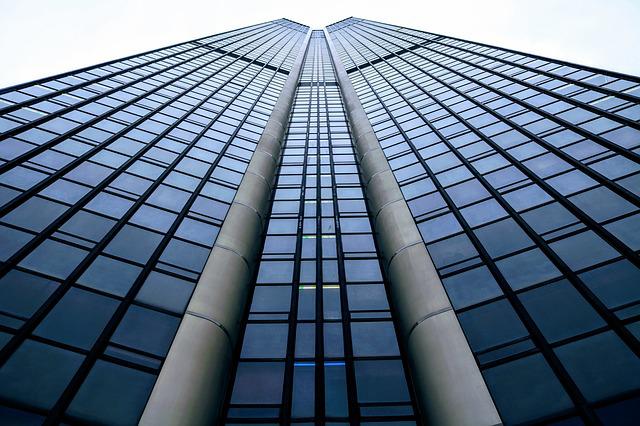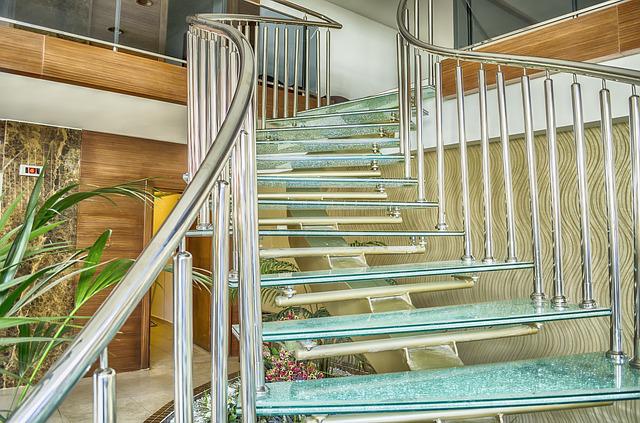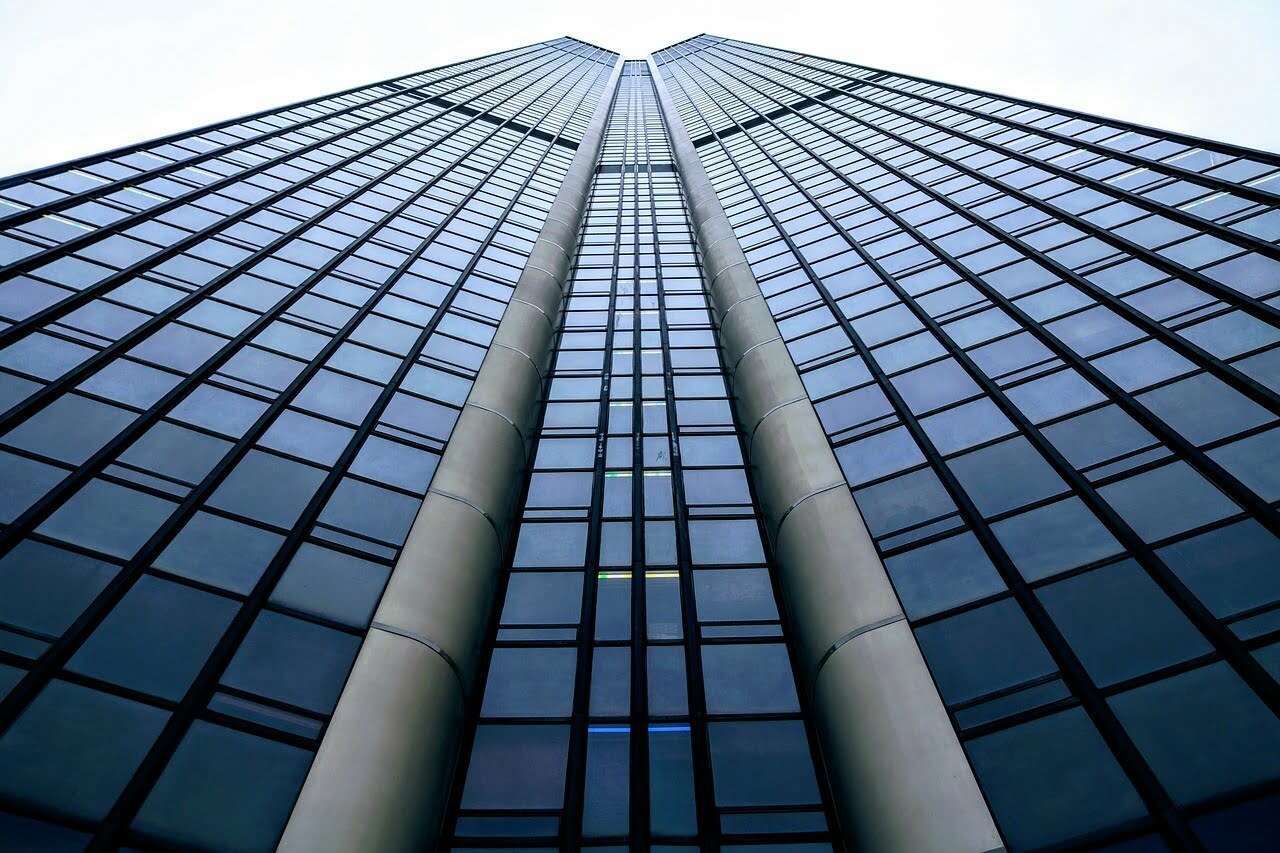Last Updated on June 6, 2023 by Eng Katepa
As a building material, the types of glasses come in several varieties and styles. There are types of glasses made for security, aesthetics, privacy, and insulation purposes, and they all differ from one to another. Changes in their manufacturing processes can result in increased strength, color changes, and even safer ways of breaking. And each of these types of glasses has at least one unique practical use.
What is Glass?


Glass Building Material is one of the oldest & multifaceted materials utilized in the building industry. Glass has been used to enhance the aesthetic view of structure and is fascinating material ever since it was discovered
It is an open hard substance created by giving heat to sand or quartz, glass forms an inorganic, transparent, or translucent material which can be molded into any shape.
It is a transparent glazing material, providing the architect’s new designs and possibilities to enhance the look and features of the building.
Glass Building Material adds beauty & elegance to the look and feel of the structure, it is one of the most versatile materials to be used in the construction industry.
Types of Glasses
As a material, glass varieties abound. For example, glass panels used for vehicle windows are different from the glass used for hospital room doors. Despite the wide range of glass types, there are some basic types that are more common than others. The following will explain the most common types and their uses.
1. Types of Glasses: Float Glass
Float glass is a type of glass panel made from floating molten glass over a bed of molten tin. The tin is a flat surface that is denser than the glass, providing a perfectly flat glass surface. As the glass cools, it hardens and is cut to shape.
At its most basic level, float glass is a popular choice for window glass. However, it’s also the base form of glass that manufacturers modify to make other types of glass, so it’s always in high demand.
2. Types of Glasses: Annealed Glass
Annealed glass is essentially float glass that has gone through the annealing process. This process involves slowly cooling float glass with blasts of cold air on one side. This prevents imperfections and internal stresses, allowing for extremely clear glass. It’s ideal for cutting and shaping.
Like float glass, annealed glass is used for glass windows. It can also be used to form other types of glass, such as laminated or tempered glass.
3. Types of Glasses: Tempered Glass
Tempered glass, also known as toughened glass, is designed to be strong and also break into smaller, safer pieces than float or annealed glass. Manufacturers start with a basic float or annealed glass, heat it to roughly 1200 degrees Fahrenheit, and then cool the surface quickly while allowing the interior of the pan to cool slowly. This creates internal tension and external compression, improving the sheet’s strength up to four times.
This heating and cooling process changes the way the glass break. When a pane of toughened glass breaks, it shatters into small pieces, creating much safer conditions than float or annealed glass’s large, sharp shards. However, it cannot be cut or drilled after cooling so the manufacturing process is more complicated than float glass.
Tempered glass is a popular choice for mobile devices, automobile windows, shower doors, and large windows in tall buildings. Not only do these applications require strength, but should they break, the small pieces are much safer for vehicle occupants, pedestrians below, or folks in the bathroom.
4. Types of Glasses: Laminated Glass
Laminated glass is a type of glass made from two or more sheets of annealed glass with a thin layer of translucent material between them. This translucent layer, typically made from polyvinyl butyral, holds the glass in place should the panes break. The double layers and the film also make these panels much stronger and less likely to break. For this reason, laminated glass is also commonly known as safety glass.
Laminated glass is the most common type of glass found in doors, windows near walkways, or windows that need additional security. Generally, glass panes that are more than 9 square feet in total area, or windows frequently exposed to tornadoes or hurricanes are typically made from laminated glass as well.
Laminated glass is also used for walls and is common in high-security buildings, businesses, and law enforcement vehicles. While transparent, laminated glass reinforces the safety of homes, offices, and drivers worldwide. The extra layer of plastic can be tinted or clear and helps with soundproofing.
Strongest glass for buildings
Laminated glass is among the most effective/ strongest types used in construction. In the manufacturing of laminated glass, two plies of normal glass are usually bonded together with interlayers to form strong, permanent bonds.
The interlayers help to support the glass, providing greater thickness and durability. Laminated glass comes in various thicknesses and can be created using varying glass combinations or coating to achieve useful properties like increased insulation or low emission.


The reinforced hardness of laminated glass makes it ideal for glass floors, aquariums, animal enclosures, glass stairs, skylights, and glass roofs. Laminated glass is also perfect for usage in buildings located in insecure locations or structures based in areas prone to natural disasters like hurricanes.
5. Types of Glasses: Heat-Strengthened Glass
Heat-strengthened glass is similar to tempered glass, with a heating and cooling process used to increase the glass’s strength. However, heat-strengthened glass is cooled more slowly, reducing the amount of tension within the glass. This makes the glass up to twice as strong as float or annealed glass but it maintains a similar break pattern, meaning they break into larger shards of glass that typically stay in the frame. Heat-strengthened glass is popular in high-temperature environments where thermal stresses may affect float or annealed glass.
6. Types of Glasses: Wired Glass
Wired glass is an older type of glass used to promote safety in schools, hospitals, and other commercial environments. The metal mesh, or wires, inside the glass prevent the pane from breaking and falling, keeping most of the glass in the frame and maintaining the door’s fire resistance. Should the glass be exposed to high temperatures during a fire, wired glass holds the shards in the frame to prevent the fire from spreading as quickly.
The most common uses for wired glass include school and hospital doors and windows, specifically for use in fire doors.
7. Types of Glasses: Insulated Glass
Insulated glass is a type of glass that inhibits the transfer of heat through a window or door. Rather than the glass itself being insulated, it’s actually a system of two or more panes of glass, a spacer between them, an inert gas between the panes, and a frame to hold it all together. The space between the two panes of glass prevents heat from traveling along a thermal bridge, trapping it on one side of the glass. On hot days, it keeps the heat outside. On cold days, it keeps the heat inside.
Insulated glass is commonly used in windows or doors, or any opening where heat loss is a probable and undesirable outcome. Typically, these windows use annealed or laminated glass panes.
8. Types of Glasses: Mirrored Glass
Mirrored glass is a type of coated glass used to reflect images and light. It starts as sheets of float glass, but the manufacturer coats one side with a metal material. The float glass is perfectly clear, while the metal (typically silver or aluminum) film reflects the image back to the person. To adhere the metal to the glass, the manufacturer boils the metal of choice and places the sheet of float glass on top. As the metal atoms cool, they adhere to the sheet of glass, providing a permanent bond.
The most common use for mirrored glass is aesthetics, such as hanging a mirror in a bathroom for shaving or make-up. Also, wall-mounted mirrors, as well as those in motor vehicles, all utilize this type of glass.
Also Read: Materials Engineering
9. Tinted Glass
Tinted glass is nothing but colored glass. A color-producing ingredient is mixed with the normal glass mix to produce colored glass which does not affect other properties of glass.
10. Toughened Glass
Toughened glass is a durable glass that has low visibility. It is available in all thicknesses, and when it is broken it forms small granular chunks that are dangerous. This is also called tempered glass. This type of glass is used for fire-resistant doors, mobile screen protectors, etc.
11. Glass Wool
Glass wool is made of glass fibers and acts as an insulating filler. It is fire-resistant glass.
12. Glass Blocks
Glass blocks or glass bricks are manufactured from two different halves and they are pressed and annealed together while the melting process of glass. These are used for architectural purposes in the construction of walls, skylights, etc. They provide an aesthetic appearance when light is passed through them.
13. Chromatic Glass
Chromatic glass is used in ICUs, meeting rooms, etc. it can control the transparent efficiency of glass and protects the interior from daylight. The chromatic glass may be photochromic which has light-sensitive lamination, thermos-chromatic which has heat-sensitive lamination, and electrochromic which has electric lamination over it.
14. Extra Clean Glass
Extra clean glass has two unique properties, photocatalytic and hydrophilic. Because of these properties, it acts stain-proof and gives a beautiful appearance. Maintenance is also easy.
15. Shatterproof Glass
Shatterproof glass is just what it sounds like, a type of glass that’s resistant to shattering. In other words, it doesn’t break into sharp pieces in the event of destruction.
Manufacturing shatterproof glass involves the addition of a plastic polyvinyl butyral resin to prevent it from forming sharp pieces. It’s commonly used in windows, floors, and skylights.
Properties of Glass
Glass has various engineering properties due to which utilization of glass has become vast in construction industries as follows:
- Transparency
Transparency is the main and primary engineering property of glass that allows us to see through it. Due to this property glass can be transparent from both sides or from one side only and the other side acts like a mirror.
- Workability
Glass can be molded into any shape, or it can be blown during melting. So, the workability of glass is a superior property.
- Strength
Glass’s strength is measured by its modulus of rupture value. Glass is generally brittle or tends to break easily but we can make it stronger by adding admixtures and laminates.
- Transmittance
This property of glass refers to the visible fraction of light passing through the glass.
- U Value
This represents how much heat is transferred through the glass. Insulated glass units provide a low U value.
- Recycle Property of Glass
Any glass can be 100% recyclable. It can also be used as raw material in the construction industry.
Advantages of Glass
The following are major advantages of glass
- Transparency Is Good
Glass is a unique transparent material that allows light to pass through it so that the objects behind the glass are visible clearly.
This property of glass allows you to connect with the outer world visually, even when the door and windows are closed, it enables the light to flow in. Thus, it saves energy and reduces electricity bills.
- Dust-proof and Waterproof
Glass has a glossy and smooth surface, so it becomes dustproof and can be cleaned efficiently. Unlike other materials, it is easy to maintain.
Another advantage is, that it is waterproof. Due to such dual advantageous benefits of glass as the dustproof & waterproof material, it is mostly preferred in areas often clad with dust and sand in the air.
- Color Availability
Glass is available in a wide range of colors, and when we combine the glass sheet in laminated or insulated units, it changes color and enhances the beauty of its appearance.
Laminated glass can be made with a wide range of colored interlayers to provide exceptional lighting effects.
- Aesthetically Appealing
Glass enables an ideal way to show off a product aesthetically. The glassy effect it can make the structure look more stunning, and sophisticated and adds beauty to the building.
- Recyclable
The other benefits we can gain from glass recycling are, that energy can be saved, it is cost-effective, it reduces water pollution and air pollution to a certain extent and it also conserves natural resources, etc.
Glass material is 100% recyclable, and it does not degrade during the recycling process. Thus, it can be recycled more times without compromising on quality or purity.
- UV Stable
Glass is UV stable since it is not affected by ultraviolet radiation and hence cracks, discoloration or disintegration will not occur.
- Weather and Rust resistant
Among all of the materials utilized in building, glass is anti-corrosive material, and only under certain conditions, the glass is chemically attacked.
Glass is fully weather-resistant. It can give greater support against the effects of the wind, rain, or the sun and can retain its appearance and integrity in most of the given conditions.
- Easily Molded
Glass building material is a transparent, hard material that can be easily molded into desired shapes. It is manufactured by the application of heat to the sand.
So, glass can be drawn and pressed to any desired shape and thus used for general glazing purposes in buildings, shop fronts, building doors, windows, and workshops.
- Insulator of Electricity
Glass building material is an excellent insulator. It does not readily conduct electricity. It makes sure that you are safe from any electrical hazards.
Due to these unique and advantageous properties, glass can be used for the formation of ceiling lights, decorating wall lights, and various other electrical appliances.
Also Read: Door Types for Your Modern Home
Disadvantages of Glass
The following are major cons of glass,
- Cost Is High
The manufacturing of glass is a highly energy-consuming process due to the high temperatures required for processing the raw materials.
Using glass in a building increases the total cost of security & privacy because of the transparency that it offers.
- Glass Is a Brittleness
Glass is a stiff, rigid, and brittle material. When glass is subjected to stress, it fails/breaks without any significant strain. Cracked pieces of glass may be very sharp, and the chances of injury to humans become very high.
- Impact Resistant Is Low
The Glass is less resistant against impact load, so the capability of the glass to withstand an immediately applied load is very poor. It will immediately break under impact.
- Corrosion Due To Alkali Solution
The Glass is affected by alkalis ions. Alkali solution dilutes a glass surface, and if the supply of alkali is more, this type of corrosion takes place at a uniform rate.
- Unsafe For Earthquake-prone Areas
Structures that are located in earthquake-prone areas require to be specially designed to take horizontal loads and movements. Material glass is more brittle than other materials, hence it tends to break or collapse quickly.
- Maintenance Cost Is High
In more dust-prone regions & humid areas, dust particles will stick to the glass surface and hence it will not only look dirty and shabby but the internal lighting, as well as transparency, will be poor.
Final Thoughts
Those are just a few of the most popular types of glass on the market (there are even more). However, the types discussed cover the most common uses of manufactured glass. Each type of glass has its own strengths and weaknesses, making them each ideal for certain situations. Whether it’s to maintain comfortable temperatures in living spaces or to resist tornadoes and hurricanes, there’s a specific type of glass for the job.
We hope this article helped you learn the various types of Glasses used in construction. You may also want to see our tips on Construction Terminologies You Should Know, Cladding: Types and Considerations, and How do Engineers Do?
If you liked this article, please Join WebsiteForEngineers on Telegram, and you can also find us on Pinterest, Twitter, and Facebook.

